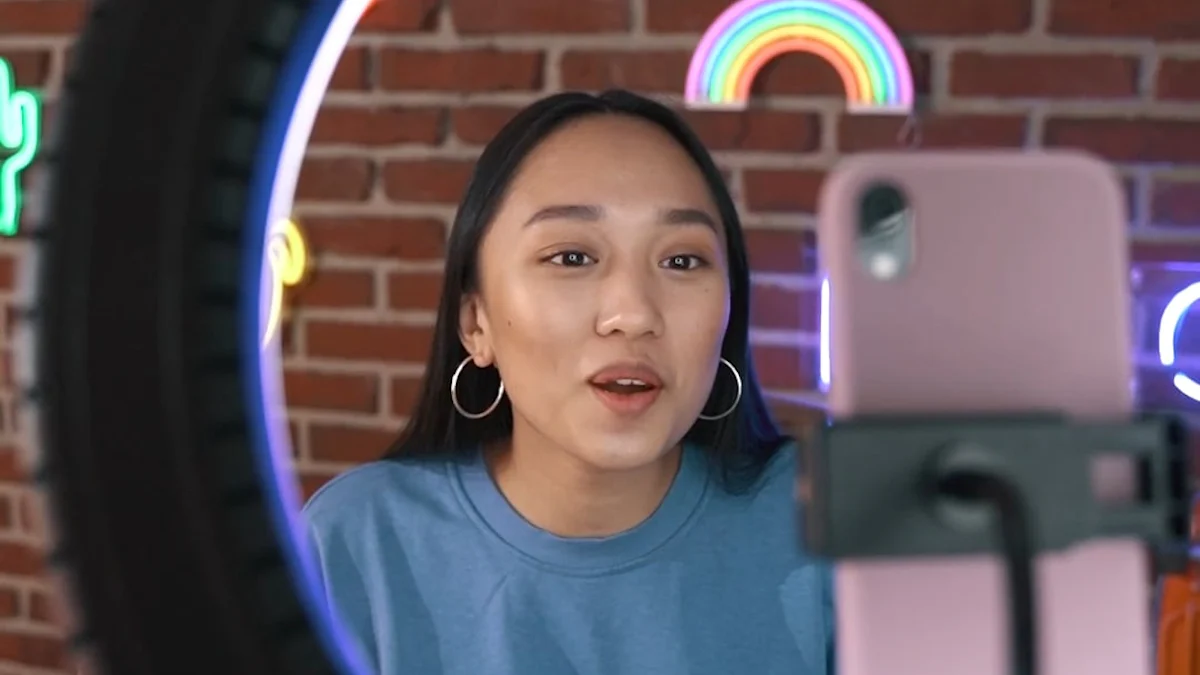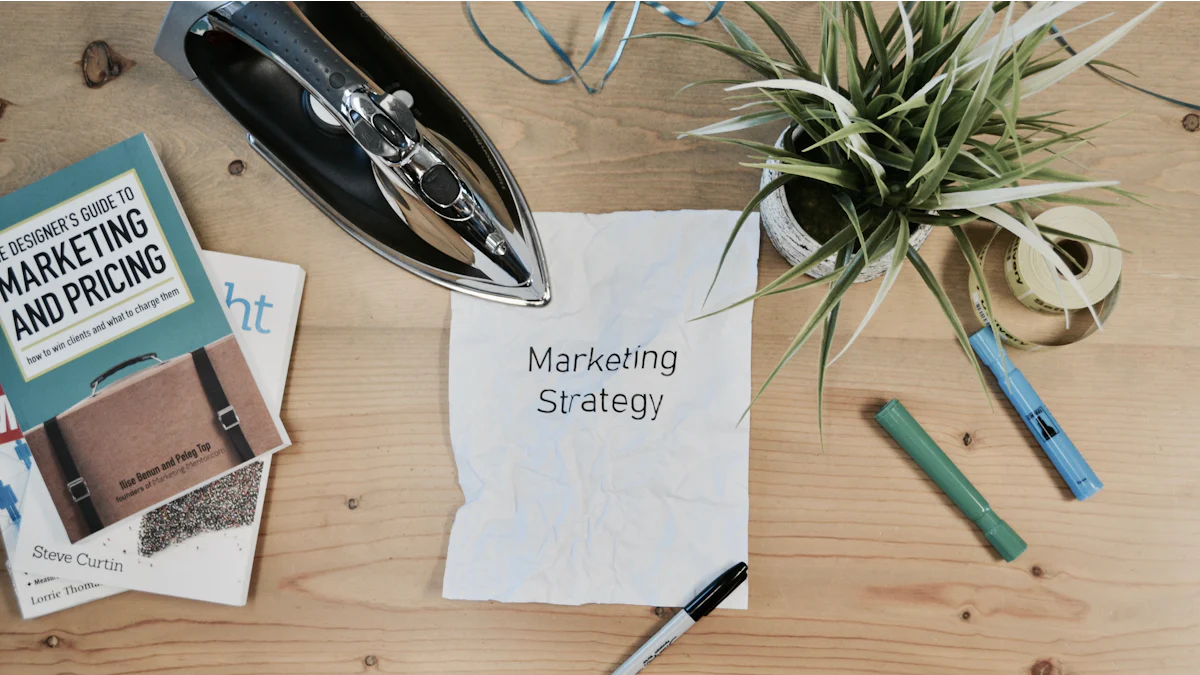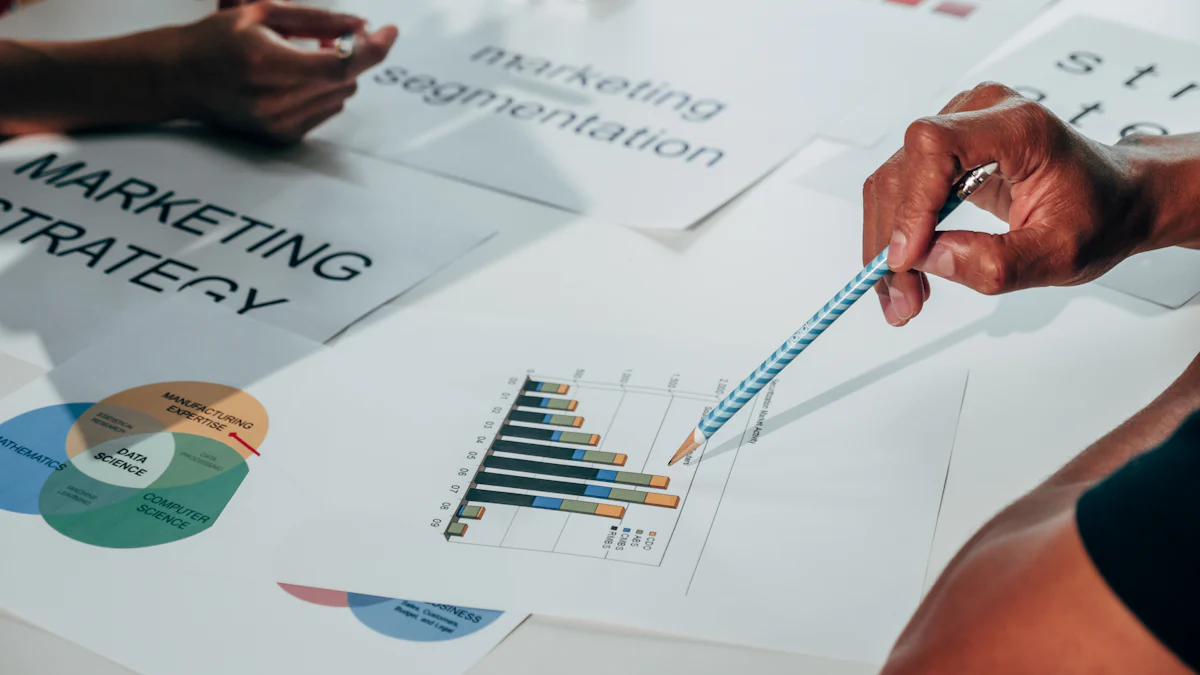What Is B2B Influencer Marketing and How Does It Work

B2B influencer marketing connects your business with industry experts to promote products or services to other businesses. Unlike traditional advertising, this approach relies on the authority and trust these experts have built within their fields. For example, IBM’s collaboration with influencers in cloud computing and artificial intelligence reached over 14 million people and generated 120,000 engagements. This strategy helps you tap into niche audiences, build credibility, and drive measurable results. With click-through rates on influencer content performing 342% better than average, it’s clear that influencer marketing for B2B delivers significant value.
How B2B Influencer Marketing Differs from B2C

Target Audience in B2B vs. B2C
The target audience is one of the most significant differences between B2B and B2C influencer marketing. In B2B, you aim to reach professionals, decision-makers, and stakeholders within organizations. These individuals prioritize long-term value, return on investment (ROI), and strategic benefits. On the other hand, B2C marketing focuses on individual consumers who often make decisions based on emotions, convenience, or trends. While B2B customers evaluate purchases carefully, B2C customers are more likely to act on impulse. Understanding these differences helps you tailor your approach to meet the unique needs of each audience.
Types of Influencers in B2B
In B2B influencer marketing, the types of influencers differ significantly from those in B2C. You’ll often work with industry experts, thought leaders, and subject matter experts (SMEs). These individuals have deep knowledge in specific fields and are trusted for their expertise. Micro-influencers with smaller but highly engaged audiences can also be effective, as they build strong relationships with their followers. Additionally, employee advocates and consultants play a key role in B2B campaigns. Unlike B2C influencers, who often focus on lifestyle or entertainment, B2B influencers provide valuable insights and foster credibility within their industries.
Content and Messaging in B2B
The content and messaging in B2B influencer marketing are more complex and educational compared to B2C. Your audience expects in-depth information that addresses their challenges and offers practical solutions. For example, webinars, case studies, and whitepapers resonate well with B2B audiences. These formats allow you to showcase expertise and build trust. In contrast, B2C content often relies on visual appeal and entertainment to capture attention. By focusing on thought leadership and value-driven messaging, you can effectively engage your B2B audience and guide them through the decision-making process.
The B2B Sales Cycle
The B2B sales cycle is often longer and more intricate than its B2C counterpart. This extended timeline stems from the involvement of multiple decision-makers, each with unique priorities and concerns. As a result, your marketing efforts must address these complexities by providing consistent value and fostering trust throughout the process.
In B2B influencer marketing, the length of the sales cycle shapes your strategy. Unlike B2C campaigns that aim for quick conversions, B2B campaigns focus on building long-term relationships. You need to collaborate with influencers who can consistently engage your target audience over time. Their expertise and thought leadership help you establish credibility, which is essential for navigating the decision-making process.
The longer sales cycle also means you should prioritize lead quality over quantity. Instead of chasing immediate results, your campaigns should aim to nurture high-value accounts. Influencers can play a key role here by creating content that resonates with specific pain points and offers actionable solutions. For example, a well-crafted webinar or case study can guide potential clients through the research and evaluation stages of the buying journey.
Additionally, the strategic nature of B2B influencer marketing makes it harder to measure direct outcomes. You may not see immediate spikes in sales, but the impact on account engagement and brand perception can be significant. By focusing on these metrics, you can better align your campaigns with the realities of the B2B sales cycle. This approach ensures that your efforts contribute to long-term success rather than short-term gains.
Tip: Partner with influencers who understand your industry and can provide consistent value over time. Their insights can help you navigate the complexities of the B2B sales cycle while building trust with your audience.
Benefits of Influencer Marketing for B2B

Building Credibility and Trust
In B2B, trust plays a critical role in decision-making. Partnering with thought leaders allows you to leverage their expertise and reputation to build credibility. Influencers who share authentic insights about your products or services can make your brand more trustworthy. For example, 73% of decision-makers find thought leadership content more reliable than traditional marketing materials. This trust translates into measurable benefits: increased brand awareness, enhanced credibility, and higher engagement. By collaborating with influencers who align with your values, you can create authentic connections that resonate with your targeted professional audience.
Reaching Niche Audiences
B2B influencer marketing excels at reaching niche audiences that traditional advertising often misses. Influencers in specialized fields have a direct line to professionals who value their expertise. For instance, Smartsheet’s #FruitfulWork campaign targeted productivity experts and niche influencers, resulting in a 30% increase in app downloads. Similarly, Refinitiv’s global campaign reached 7.8 million people across regions like APAC and EMEA by focusing on fintech predictions. These examples highlight how b2b influencer campaigns can connect you with specific audiences, driving lead generation and fostering meaningful engagement.
Enhancing Brand Awareness
Influencer marketing for B2B significantly boosts brand awareness by amplifying your message through trusted voices. Influencers help you reach new audiences while ensuring your content feels authentic. Metrics like engagement, reach, and impressions measure the impact of these efforts. For example, a software company in data analytics partnered with influencers to showcase how their solutions supported data-driven decisions. This collaboration enhanced their visibility and positioned them as industry leaders. By working with thought leaders, you can ensure your brand remains top-of-mind for your audience, paving the way for long-term success.
Tip: Focus on authenticity when selecting influencers. Their genuine connection with their audience ensures your message resonates effectively.
Driving ROI
B2B influencer marketing offers a measurable way to improve your return on investment (ROI). By collaborating with trusted industry experts, you can create campaigns that drive meaningful engagement and deliver tangible results. Unlike traditional advertising, this approach focuses on building relationships and providing value, which leads to higher-quality leads and better conversion rates.
Successful B2B influencer campaigns demonstrate how this strategy can boost ROI. For example, Smartsheet’s #FruitfulWork campaign achieved a 30% increase in app downloads by targeting productivity experts. Similarly, Cherwell’s campaign generated a 342% better click-through rate and attracted 90% net new visitors. These results highlight the power of influencer marketing in reaching niche audiences and driving engagement.
| Company | Campaign Name | Key Metrics | ROI Improvement |
|---|---|---|---|
| Smartsheet | #FruitfulWork | 10,259 pageviews, 23,000 video views | 30% increase in app downloads |
| Cherwell | N/A | 342% better click-through rate, 5.45M potential reach, 90% net new visitors | Significant increase in engagement |
| Mitel | N/A | 7.2M+ social media reach, 5,000+ landing page visits, 270% influencer placements | Enhanced traffic and reach |
| N/A | Nearly 2,000 brand mentions, 84M potential reach, 200-450% engagement above benchmark | Elevated brand visibility and engagement |
To maximize ROI, focus on creating campaigns that align with your business goals. Partner with influencers who understand your industry and can communicate your value effectively. Their expertise helps you build trust with your audience, which is essential for driving long-term results. Additionally, track key performance indicators (KPIs) like engagement, lead quality, and conversions to measure the success of your efforts. By analyzing these metrics, you can refine your strategy and ensure your campaigns deliver consistent value.
Tip: Use data-driven insights to optimize your campaigns. Regularly evaluate performance metrics to identify what works and adjust your approach accordingly.
How to Implement B2B Influencer Marketing
Identifying the Right Influencers
Finding the right influencers is the foundation of a successful b2b influencer marketing campaign. Start by understanding your target audience. Research their demographics, interests, and challenges. This helps you identify influencers who can effectively communicate your message. Define your marketing objectives clearly. Whether you aim to boost brand awareness or drive conversions, your goals should align with your influencer selection.
Follow these steps to choose the right influencers:
- Understand your end goal to guide your search.
- Stay updated on industry trends to find relevant voices.
- Prioritize influencers with authority in your niche.
- Focus on engagement quality over follower count.
- Conduct thorough research to ensure alignment with your brand.
- Use tools like Sprout Social or Upfluence to analyze metrics and streamline your search.
By focusing on these criteria, you can ensure your influencers resonate with your audience and amplify your message effectively.
Tip: Evaluate an influencer’s reach, resonance, and relevance to confirm they align with your b2b influencer strategies.
Building Long-Term Relationships
Long-term partnerships with influencers yield better results than one-off collaborations. Consistent engagement builds trust and strengthens your brand’s credibility. For example, IBM’s #NewWayToWork campaign successfully leveraged influencer relationships to promote workplace insights. Similarly, Microsoft partnered with industry experts to drive digital transformation solutions.
Here’s how to foster lasting relationships:
- Communicate openly and regularly with influencers.
- Provide value by offering resources or exclusive opportunities.
- Collaborate on content that aligns with their expertise and your goals.
| Brand | Campaign Description | Results |
|---|---|---|
| Leading Technology Firm | Partnered with tech influencers to explain cloud solutions. | Increased brand visibility and viral content sharing. |
| Leading Global Distributor | Worked with sustainability influencers to showcase supply chain innovations. | Boosted website traffic and inquiries about sustainable solutions. |
Building strong partnerships ensures influencers remain invested in your brand, enhancing the effectiveness of your b2b social media strategies.
Developing a Clear Strategy
A clear influencer marketing strategy ensures your campaigns achieve measurable success. Start by setting specific goals. Define your target audience and create a budget and timeline. Identify influencers who align with your objectives and collaborate on content that resonates with your audience.
Follow these steps to develop an effective strategy:
- Set clear goals for your campaign.
- Identify your audience and their pain points.
- Plan your content to address these challenges.
- Co-create content with influencers to ensure authenticity.
- Measure success using metrics like engagement and conversions.
Focus on building authentic relationships with influencers. Shared values and mutual benefits create a win-win situation for both parties. By aligning your strategy with b2b influencer trends, you can amplify your reach and achieve long-term success.
Note: Regularly evaluate your strategy to adapt to changing trends and audience needs.
Creating Collaborative Content
Collaborative content lies at the heart of successful B2B influencer marketing. When you co-create content with influencers, you combine their expertise with your brand’s message. This approach not only enhances authenticity but also ensures the content resonates with your target audience.
For example, Smartsheet’s #FruitfulWork campaign demonstrated the power of collaboration. By partnering with respected influencers, Smartsheet raised awareness about their app’s integration with Microsoft Teams. The co-created content amplified their social reach and fostered community engagement. Similarly, Introhive developed a playbook addressing common questions about their product. They collaborated with legal influencers who promoted this playbook during keynote speeches at legal conferences. This strategy positioned Introhive as a thought leader while providing valuable resources to their audience.
Another effective tactic involves leveraging industry events. Introhive conducted an industry survey and created a playbook based on the insights gathered. Influencers shared this playbook during the Legal Marketing Association event, using the event hashtag to maximize visibility. These examples highlight how collaborative content can drive engagement and establish your brand as a trusted authority.
To create impactful content, focus on formats that align with your audience’s preferences. Webinars, whitepapers, and case studies often perform well in B2B settings. Work closely with influencers to ensure the content addresses your audience’s challenges and provides actionable solutions. By fostering collaboration, you can create content that not only informs but also inspires your audience to take action.
Tip: Choose influencers who share your brand’s values and have a deep understanding of your industry. Their insights will enhance the quality and relevance of your collaborative content.
Measuring and Optimizing Campaigns
Measuring the success of your B2B influencer marketing campaigns ensures you achieve your goals. Start by tracking key metrics that reflect your campaign’s performance.
| Metric | Description |
|---|---|
| Impressions | Total times the influencer’s content is displayed to the audience. |
| Reach | Potential audience size exposed to the influencer’s content. |
| Engagement | Level of interaction with the influencer’s content (likes, shares, comments). |
| Conversions | Number of desired actions driven by the influencer’s content (leads, sign-ups, purchases). |
| Revenue | Total money contributed by the influencer’s content to the business. |
| Cost | Total expenditure for collaborating with the influencer and promoting their content. |
To optimize your campaigns, use tools and methods that provide actionable insights. Create tracking URLs for each influencer to monitor traffic. Develop unique landing pages tailored to each influencer’s audience. Set benchmarks for metrics like reach, engagement, and conversions. Compare these benchmarks with non-influencer campaigns to evaluate effectiveness.
Regularly analyze your data to identify areas for improvement. If engagement rates are low, consider adjusting your content strategy. If conversions fall short, refine your call-to-action or target audience. By continuously optimizing your campaigns, you can maximize ROI and ensure long-term success.
Tip: Use data-driven insights to guide your decisions. Consistent evaluation helps you adapt to changing trends and audience needs.
Common Mistakes in B2B Influencer Marketing
Choosing Irrelevant Influencers
Selecting the wrong influencers can derail your campaign before it even begins. Many businesses make the mistake of choosing influencers based on personal opinions rather than data-driven insights. This often leads to a misalignment between the influencer’s audience and your campaign goals. For example, focusing on follower count instead of engagement rates can result in low-quality leads. Overspending on popular influencers without considering audience relevance is another common pitfall.
To avoid these issues, prioritize influencers who align with your brand’s objectives. Look for those with authority in your niche and a proven track record of engaging your target audience. Misalignment of goals, such as confusing brand awareness with lead generation, can also lead to unrealistic expectations. Always ensure your influencer selection supports your specific marketing objectives.
Failing to Set Clear Goals
Unclear goals can undermine even the most well-planned campaigns. Without defined objectives, you risk wasting resources and missing opportunities to measure success. For instance, a B2B brand might include high-profile influencers in a demand generation project that achieves millions of impressions. However, if the goal was to collect leads, the campaign could fail if few people share their email for a download.
Set specific, measurable goals for your campaigns. Whether you aim to increase brand awareness or drive conversions, your objectives should guide every decision. Clear goals also help you track performance metrics, ensuring your efforts deliver tangible results.
Note: Ambiguity about goals often leads to a lack of defined metrics and poor performance measurement.
Neglecting Relationship Building
Treating influencer interactions as mere transactions can harm your long-term success. One-time campaigns may yield immediate results, but they often fail to build lasting relationships. Engaging influencers only when you need them signals that you care more about your needs than theirs.
Successful partnerships require mutual respect and ongoing engagement. Communicate regularly with influencers and involve them in your brand’s journey. Provide value by offering resources or exclusive opportunities. Long-term relationships not only enhance collaboration but also increase the likelihood of influencers advocating for your brand authentically.
Tip: Focus on building trust with influencers. Strong relationships lead to better engagement and more impactful campaigns.
Ignoring Performance Metrics
Neglecting performance metrics can undermine the success of your B2B influencer marketing campaigns. Without tracking key data points, you cannot determine whether your efforts are delivering results. This oversight often leads to wasted resources and missed opportunities for improvement.
Metrics provide valuable insights into how your campaigns perform. They help you identify what works and what doesn’t. For example, if you don’t measure engagement rates, you won’t know if your audience finds the content compelling. Similarly, ignoring conversion data makes it impossible to assess whether your campaign drives leads or sales.
To avoid this mistake, focus on tracking essential metrics. These include:
- Engagement: Measures likes, shares, and comments on influencer content.
- Reach: Tracks how many people see your campaign.
- Conversions: Evaluates actions like sign-ups or purchases.
- ROI: Calculates the financial return from your investment.
| Metric | Why It Matters |
|---|---|
| Engagement | Shows how well your content resonates with the audience. |
| Reach | Indicates the size of your potential audience. |
| Conversions | Highlights the effectiveness of your call-to-action. |
| ROI | Confirms whether your campaign delivers financial value. |
Regularly reviewing these metrics allows you to refine your strategy. If engagement is low, you can adjust your messaging. If conversions fall short, you might need to improve your call-to-action.
Tip: Use tools like Google Analytics or HubSpot to track performance. These platforms simplify data collection and analysis.
By monitoring metrics, you ensure your campaigns stay on track. This approach helps you make informed decisions and achieve better results. Ignoring performance data leaves you guessing, which can cost you time and money.
B2B influencer marketing has become a powerful tool for building trust, reaching niche audiences, and achieving measurable results. By collaborating with thought leaders, you can enhance your brand’s credibility and connect with professionals who value authenticity. Studies show that 85% of businesses now use influencer marketing for B2B, a significant rise from 34% in 2020. Programs that focus on authenticity report improved brand reputation (58%) and increased sales revenue (61%).
Strategic planning is essential for success. Partner with thought leaders who align with your goals and create campaigns that resonate with your audience. GoToMeeting’s partnership with high-value publications led to a 725% increase in paid accounts, proving that even small efforts can yield remarkable outcomes. Start small, experiment, and refine your approach. Authenticity and long-term relationships will ensure your campaigns deliver lasting value.
The future of influencer marketing hinges on harnessing AI’s unmatched data analysis potential.
— Christopher S. Penn
FAQ
What is the main goal of B2B influencer marketing?
The main goal is to build trust and credibility by leveraging industry experts. This approach helps you connect with niche audiences, enhance brand awareness, and drive measurable results.
How do you choose the right influencers for your campaign?
Focus on influencers with expertise in your industry. Look for those who engage with your target audience and align with your brand’s values. Use tools to analyze their metrics and ensure relevance.
What types of content work best in B2B influencer marketing?
Webinars, case studies, and whitepapers often perform well. These formats provide in-depth information and practical solutions, which resonate with professional audiences.
How can you measure the success of a B2B influencer campaign?
Track metrics like engagement, reach, conversions, and ROI. Use tools like Google Analytics to monitor performance and refine your strategy based on the data.
Why are long-term relationships with influencers important?
Long-term relationships build trust and consistency. Influencers who understand your brand can create authentic content that resonates with your audience over time.
See Also
Exploring TikTok Influencer Marketing: Functionality And Benefits
Best Platforms For Influencer Marketing In E-commerce Growth
Decoding The Return On Investment In Influencer Marketing
Navigating Influencer Marketing Tools For Small Business Success
Key Influencer Marketing Statistics For Effective Strategy Development
